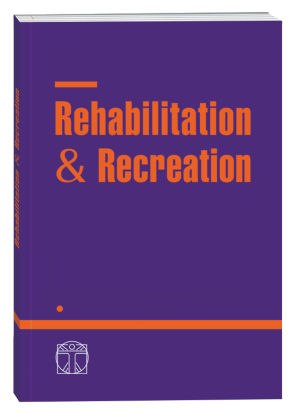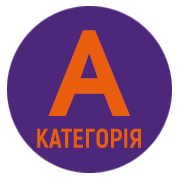THE CORRELATION BETWEEN BODY COMPOSITION AND AEROBIC ENDURANCE AS A PREDICTOR OF SPORTS PERFORMANCE IN 16–18-YEAR-OLD SWIMMERS
DOI:
https://doi.org/10.32782/2522-1795.2024.18.21Keywords:
composition, performance, swimmers, correlation, distance, resultsAbstract
In the presented article, the components of body composition and working capacity factors were analyzed. The obtained data were correlated with the volume of training and athletic performance. The research was conducted on eight swimmers from the MUKS Astoria club in Bydgoszcz. In relation to the discussed issues, four hypotheses were put forward. The first two suggest that due to the applied training volume, differences in the components of body composition and aerobic capacity will be noticeable. The next hypothesis concerns the influence of the components of body composition on performance. The fourth includes the statement that the applied training volume, performance, and the components of body composition will affect the athletic outcome. The research showed minor changes in the components of body composition due to the training volume used. The performance was improved, both of the oxygen threshold, power, and AT threshold. Performance did not correlate with the training volume. It is possible to assume that the decisive factor in improving performance is the qualitative component of training loads, i.e., intensity. A statistically significant correlation between performance and the components of body composition was noted. Swimmers with less fat (FAT) and more water and muscle mass (SMM) had better performance. In the group under research, the FAT and SMM values were in line with the reference values. Correlating performance and the components of body composition with athletic results, depending on the distance and swimming style, a statistically significant correlation was observed. In the backstroke style, it was shown that Vo2 max and power do not play such a crucial role since it is a technical style. Moreover, backstroke athletes characterized by lower SMM, water content and higher FAT achieved better sports results. In the classical style, swimmers with a higher oxygen threshold and maximum power, as well as higher water and SMM content and less FAT, achieved better athletic performance. In butterfly, great power indicated a better athletic result. Both styles require high physical fitness and significant energy expenditure. For the 100-meter distance, a higher FAT content allowed swimmers to float higher in the water and achieve a better athletic outcome. A similar correlation was found when analyzing the 50-meter distance, confirming that for sprinters, higher FAT and lower SMM contribute to improved sports performance.
References
Andrieieva, O., Maltsev, D., Kashuba, V., Dutchak, M., Ratnikov, D., Grygus, I., Byshevets, N., & Horodinska, I. (2022). Relationship Between Quality of Life and Level of Physical Activity and Family Well-Being. Physical Education Theory and Methodology, 22(4):569–575. https://doi.org/10.17309/tmfv.2022.4.16.
Blomstrand, E., Radegran, G., Saltin, B. (1997). Maximum rate of oxygen uptake by human skeletal muscle in relation to maximal activities of enzymes in the Krebs cycle. Journal of Physiology, 501(2):455–460.
Bolanowski, M., Zadrożna-Śliwka, B., Zatońska, K. (2005). Body composition studies – methods and possible application in hormonal disorders. Endokrynol. Otył. Zab. Przem. Mat. 1(1):20–25.
Catalani, F., Fraire, J., Pérez, N., Mazzola, M., Martínez, A.M., Mayer, M.A. (2016). Underweight, overweight and obesity prevalence among adolescent schoolchildren in the Province of La Pamp Argentina. Arch Argent Pediatr. 114(2):154–8.
Cedric X., Bryant, Daniel J., Green. (2003). ACE Personal Trainer Manual. The Ultimate Resource for Fitness Professionals. Fourth Edition. ACE, United States. 34–42.
Czarkowska-Pączek, B., Przybylski, J. (2006). Zarys fizjologii wysiłku fizycznego. Wyd. Med. Urban & Partner, Wrocław. 86–92.
Czerwiński, J., Przybylski, W. (2001). Problem indywidualnego kierowania procesem treningowym sportowców. Trening sportowy na przełomie wieków : Międzynarodowa Konferencja Naukowo-Metodyczna, t. 17, AWF, Warszawa. 61–66.
Derbyshire, E. (2012). An Intervention to Improve Cognition and Hydration in UK School Children using Bottled Water. Complete Nutrition May. 12(2):18–20.
Escobar-Cardozo, G.D., Correa-Bautista, J.E., González-Jiménez, E., Schmidt-Rio, Valle, J., Ramírez-Vélez, R. (2020). Percentiles of body fat measured by bioelectrical impedance in children and adolescents from Bogotá (Colombia): the FUPRECOL study. Arch Argent Pediatr. 114(2):135–142.
Górski, J. (2011). Fizjologia wysiłku i treningu fizycznego. PZWL, Warszawa, wyd. I. 11. Gruszka, J., Malczyk, E. 2012.
Sposób żywienia pacjentów zgłaszających się do gabinetu dietetycznego. Bromat. Chem. Toksykol. 45(3):619–627.
Hagner-Derengowska, M., Hagner, W., Zubrzycki, I., Krakowiak, H., Słomko, W., Dzierżanowski, M., Rakowski, A., Wiącek-Zubrzycka, M. (2014). Body structure and composition of canoeists and kayakers: analysis of junior and teenage polish national canoeing team. Biol Sport. 31(4):323–326.
Ivchenko, V., Lytvynenko, Y., Aloshyna, A., Byshevets, N., Grygus, I., Kashuba, V., Shevchuk, O., Byshevets, H., Yarmolinsky, L. (2023). Dependence of the Parameters of Precision-Target Movements on the Nature of the Movements of Athletes. International Journal of Human Movement and Sports Sciences, 11(5):985–993. DOI: 10.13189/saj.2023.110506.
Lieberman, H.R. (2007). Hydration and cognition: a critical review & recommendations for future research. J Am Coll Nutr. 26(5):555–561.
Mahlovanyy, A., Kunynets, O., Grygus, I., Ivanochko, O. (2023). The influence of dosed physical exercise on indicators of the cardiovascular system of persons who have lost limbs. Rehabilitation & recreation. 14:63–70. DOI https://doi.org/10.32782/2522-1795.2023.14.7.
Makar, P., Pęczak-Graczyk, A., Waade, B., Maksim, H. (2015). Wpływ objętości treningowej na wyniki uzyskane podczas Mistrzostw Polski Juniorów na przykładzie wybranych klubów pływackich. Ratownictwo wodne, sport pływacki i kultura fizyczna w teorii i praktyce. 2:78–90.
Makar, P., Skalski, D., Peczak- Graczyk, A., Kowalski, D., Grygus, I. (2022). Correlations between chosen physiological parameters and swimming velocity on 200 meters freestyle distance before and after 5 months of training. Journal of Physical Education and Sport, 22(3):803–810. DOI: 10.7752/jpes.2022.03102.
Mederos, R.M., da Silva Alves, E., de Aquino Lemos, V., Schwingel, P.A., da Silva, A., Vital, R., Vieira, A.S., Barreto, M.M., da Rocha, E.A., Tufik, S., de Mello, M.T. (2015). Assessment of Body Composition and Sport Performance of Brazilian Paralympic Swimming Team Athletes. J Sport Rehabil. 9:34–37.
Moony, R., Corley, G., Godfrey, A., Quinlan, L.R., ÓLaighin, G. (2015). Inertial Sensor Technology for Elite Swimming Performance Analysis: A Systematic Review. Sensors, 16(1):18.
Moska, W., Skalski, D., Kowalski, D. (2021). Obciążenia treningowe zawodników reprezentacji kadry narodowej juniorów w pływaniu. Gdańsk. 12–17.
Moska, W., Skalski, D., Makar, P., Kowalski, D. (2018). Trening zdolności motorycznych w pływaniu. PSW w Starogardzie Gdańskim, Starogard Gdański. 132–135.
Mytskan, T.S., Mytskan, B.M., Grygus, I.M. (2023). Biosocial values and functions of physical culture. Rehabilitation and Recreation, 16:90–103. https://doi.org/10.32782/2522-1795.2023.16.12.
Noradilah, M.J., Ang, Y.N., Kamaruddin, N.A., Deurenberg, P., Ismail, M.N., Poh, B.K. (2016). Assessing Body Fat of Children by Skinfold Thickness, Bioelectrical Impedance Analysis, and Dual-Energy X-Ray Absorptiometry: A Validation Study Among Malay Children Aged 7 to 11 Years. Asia-pac J public he. 12:149–151.
Petri, C., Mascherini, G., Bini, V., Anania, G., CALà, P., Toncelli, L., Galanti, G. (2016). Integrated total body composition versus Body Mass Index in young athletes. Minerva Pediatr. 8:6–9.
São RomãoPreto, L., Nogueiro Santos, A.L., Mendes, M.E., Pinto Novo, A., Pimentel, M.H. (2015). Functional impairment, fear of falling and body composition in institutionalized elderly. Enferm Clin. 25(2):81–86.
Skalski, D. (2018). Zarządzanie kryzysowe i bezpieczeństwo wodne. Wybrane aspekty ratownictwa wodnego. Pomorska Szkoła Wyższa w Starogardzie Gdańskim przy udziale Akademii Wychowania Fizycznego i Sportu im. Jędrzeja Śniadeckiego w Gdańsku i Towarzystwa Naukowego w Grudziądzu, Gdańsk – Starogard Gdański. 78–81.
Skalski, D., Kowalski, D., Ostrowski, A., Makar, P., Stanula, A. (2021). Dewiacje w sporcie wyczynowym a ich wpływ na edukacje zdrowotną. W: Medycyna i zdrowie: wybrane aspekty ratownictwa. T. 4:74–80.
Downloads
Published
How to Cite
Issue
Section
License

This work is licensed under a Creative Commons Attribution-NonCommercial-NoDerivatives 4.0 International License.












